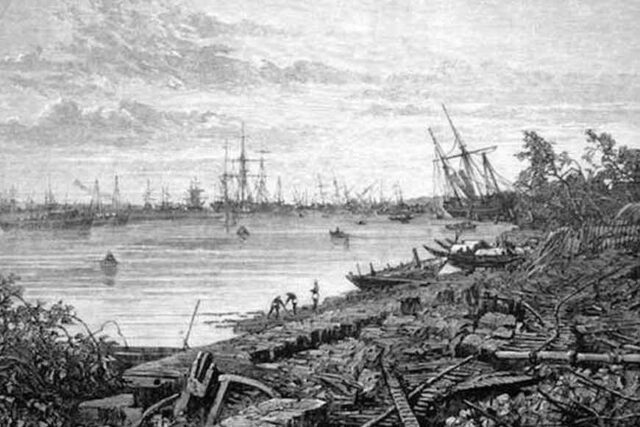Back in Time is ED’s newspaper-like column that reports an incident from the past as though it has happened just yesterday. It allows the reader to relive it several years later, on the date it had occurred.
11th October 1737
Today, just like any other day in Calcutta, people were waking up and preparing for their daily routines, unaware of the impending catastrophe that lay ahead.
On this fateful morning, a devastating tidal surge struck Calcutta, wreaking havoc throughout the town. It was the result of a brewing storm in the depths of the Ganga River the previous night. Shockingly, the cyclone was accompanied by a powerful earthquake, leading to a catastrophic doomsday scenario.

The incident came as a significant setback for British imperialism as it was a time when they, masquerading as traders, wanted to extend its influence over the Indian subcontinent.
Also Read: How Turkey’s Post-Earthquake Condition Will Affect Indian Companies, Trade?
Post Scriptum
For years, the event known as the 1737 Calcutta Earthquake, which has been historically categorized as one of the deadliest and most devastating earthquakes in modern history, raises questions when scrutinizing the available data, eyewitness accounts, and some discrepancies concerning the city’s population. The evidence supporting a significant seismic event appears to be inconclusive.
This is because there was no technology and no source of concrete evidence, and even the mass media was still in its infancy, there was nothing that could corroborate the authenticity of an event.
However, an original document penned by Thomas Joshua Moore, who served as the zamindar for the East India Company, exists. He stated that the residents of the “indigenous” town had been left in extreme poverty as a result of the storm’s devastation, with scarcely 20 thatched houses remaining intact the following day.
British and other European sailors on several merchant ships reported seeing more than 20,000 ships in the harbor destroyed and more than 300,000 killed by a tidal surge.
Just two days later, Moore reported that out of the 32 Company buildings, 24 are marked as irreparable. Among the 20 gates within the town walls, 14 have been completely shattered, and the door of the severely damaged pukka gate has been entirely dislodged from the wall.
Numerous bridges, both large and small, designed for drainage within the town, have been destroyed. Additionally, the riverbanks near the market area have eroded significantly to the extent that there is no available space for the construction of temporary warehouses to facilitate the import of much-needed grain supplies for relief.
With no proper equipment or experts to study weather patterns and issue a red flag, the earthquake of 1737 swept a large part of the city, destroying everything in its way.
Image Credits: Google Images
Sources: Telegraph India, Hub Pages, This Day
Find the blogger: Palak Dogra
This post is tagged under: kolkata, earthquake, kolkata earthquake 1737, kolkata cyclone, east india company, Thomas Joshua Moore, 1737 Calcutta Earthquake, earthquake, natural disaster, earthquake india
Disclaimer: We do not hold any right, copyright over any of the images used, these have been taken from Google. In case of credits or removal, the owner may kindly mail us.
Other Recommendations:
Horrifying, Apocalyptic Images From Turkey After More Than 1900 Killed In Massive Earthquake































